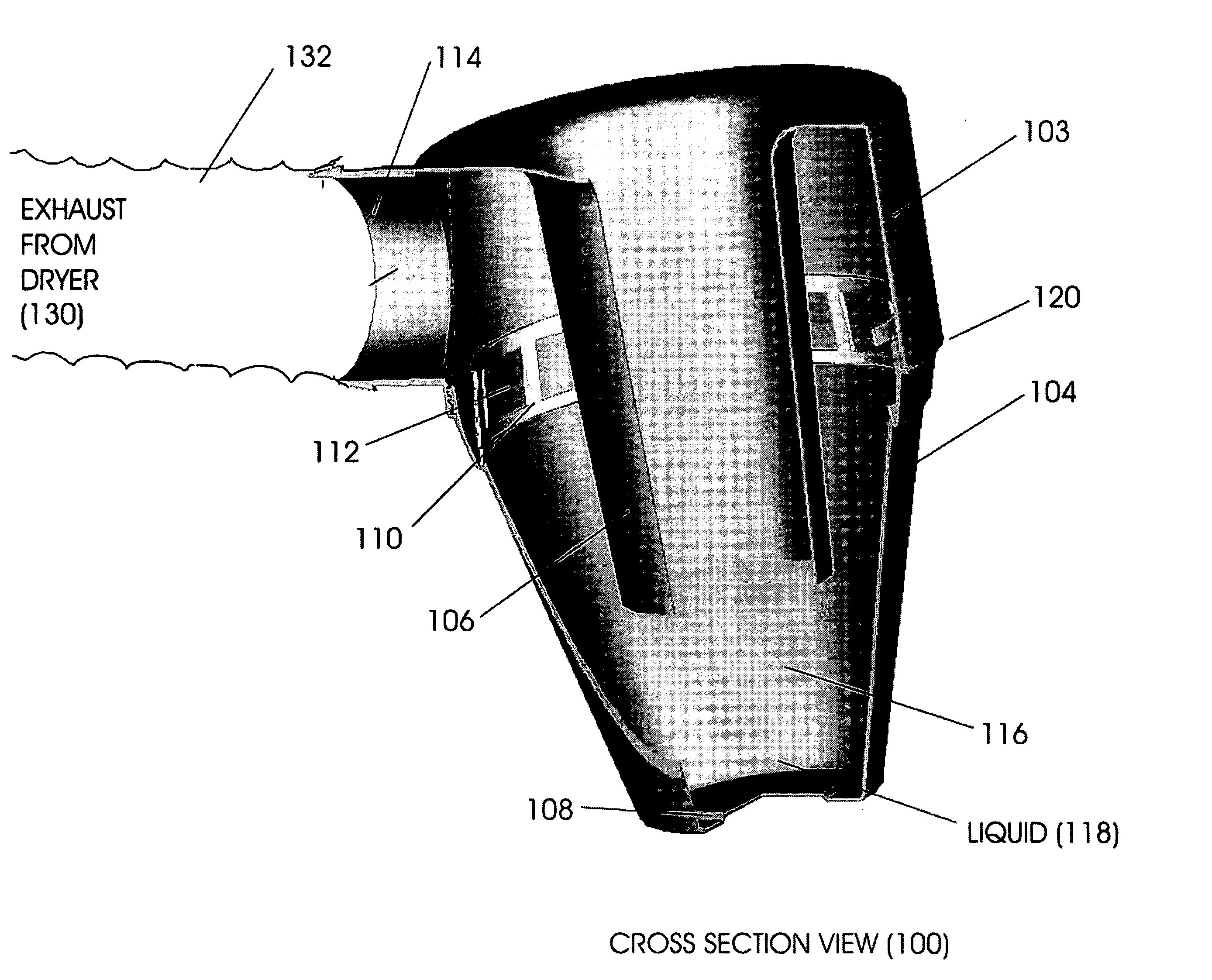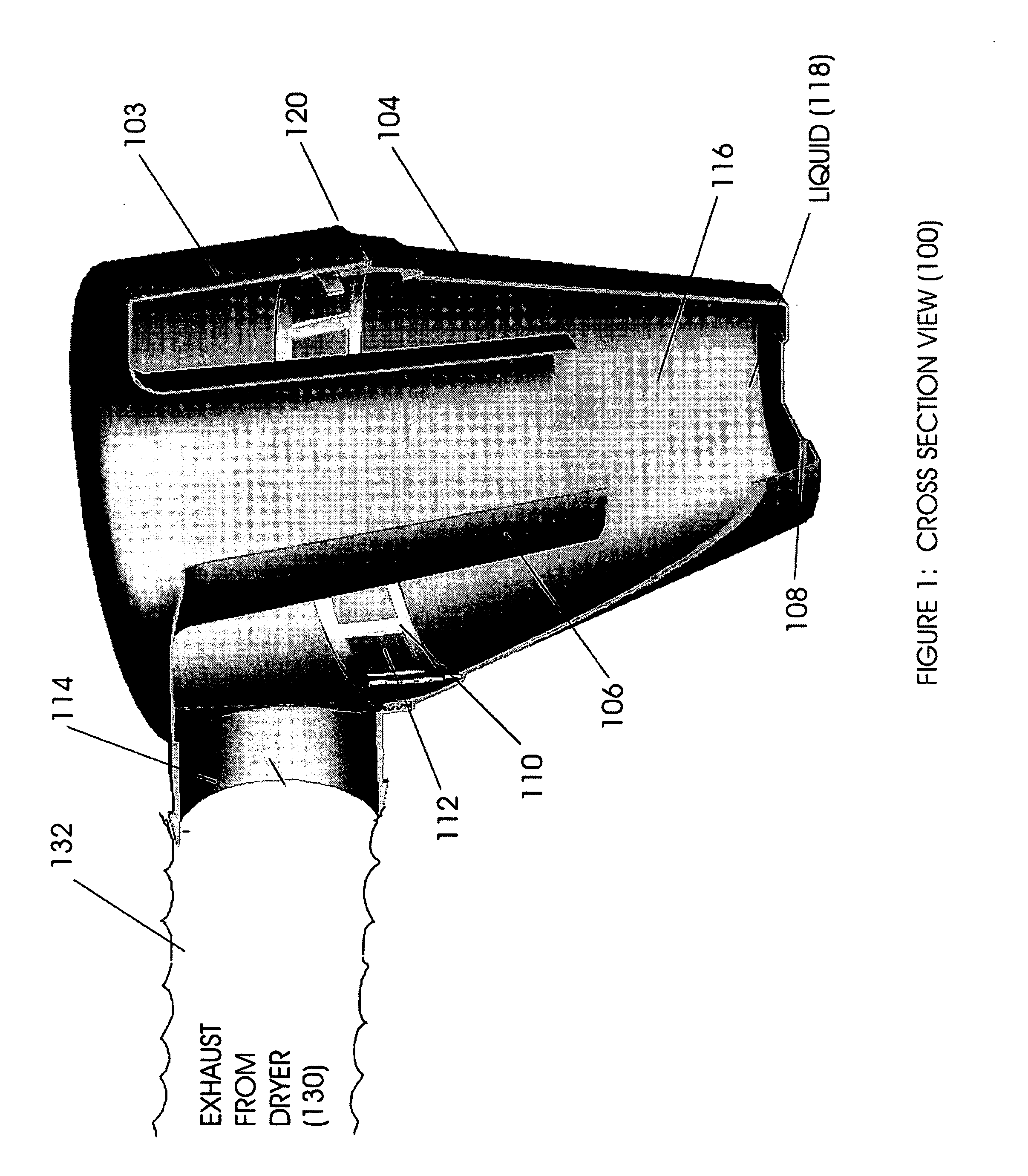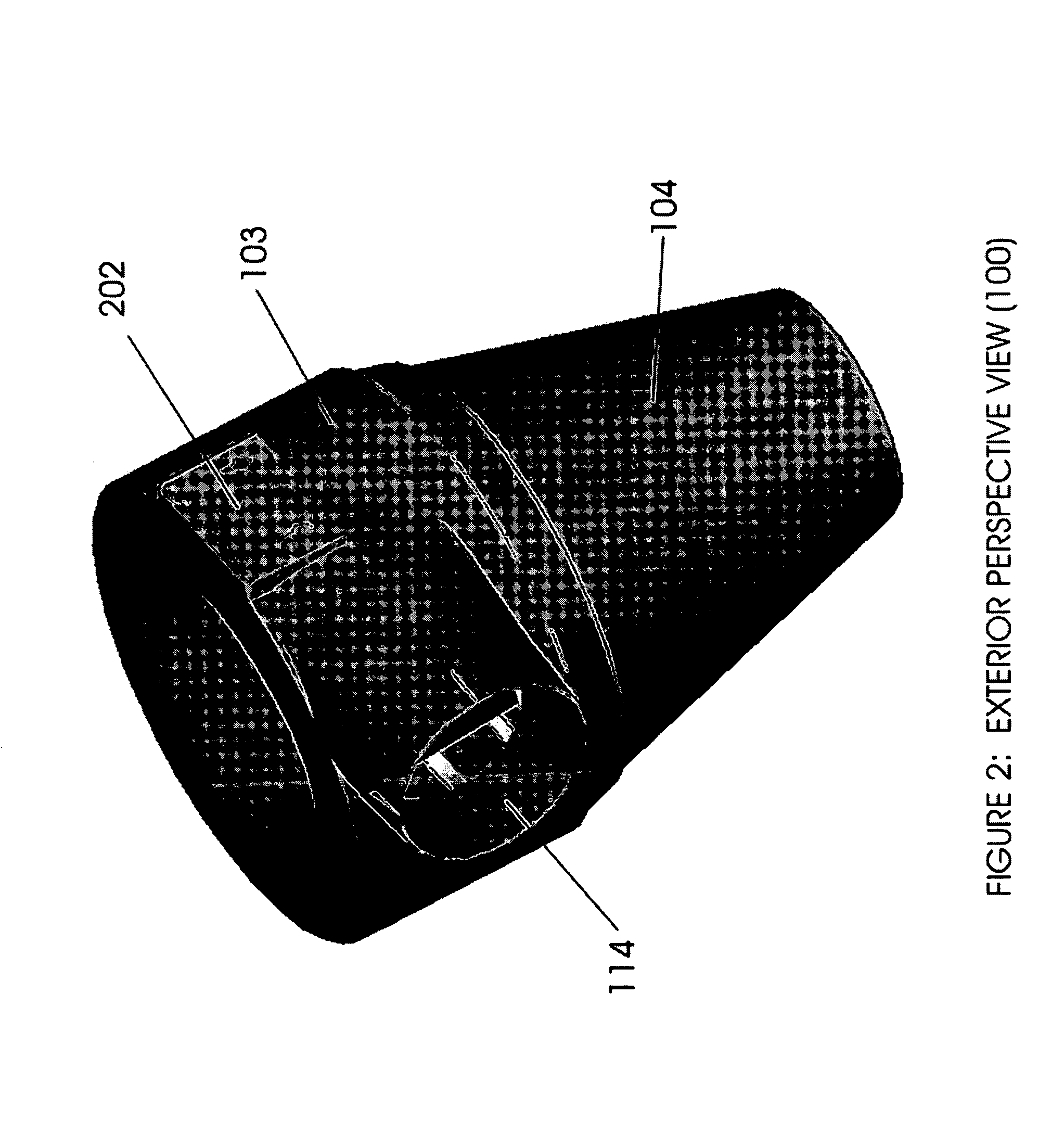Centrifugal lint trap
a centrifugal lint trap and filter technology, applied in the field of filters, can solve the problems of many homes, apartments and condominiums without ductwork, and achieve the effects of improving efficiency, increasing efficiency, and improving lint collection efficiency
- Summary
- Abstract
- Description
- Claims
- Application Information
AI Technical Summary
Benefits of technology
Problems solved by technology
Method used
Image
Examples
Embodiment Construction
[0010]FIG. 1 illustrates the lint trap 100 which includes a collection chamber 116 and an air inlet fitting 114. The collection chamber 116 includes an outer hollow housing 102 which includes an upper housing 103 and a conical base 104, and tapered inner tube 106. A liquid 118 for example water or any other suitable liquid is placed in the bottom of the removable base 104. The upper housing 103 is substantially a cylinder and is formed with or attached to the air inlet fitting 114 for attachment to clothes dryer 130 through an appropriate tubing 132. The removable base 104 has a tapered gradient to compress the air and increase the velocity of the air as it travels down the tapered gradient. This compression of the air causes the airborne particles such as lint to coalesce through inertial impaction (liquid and particle) or Brownian diffusion (particle and particle). The resulting centrifugal force pushes the coalesced particles into the wetted walls and / or the cylindrical inner scr...
PUM
 Login to View More
Login to View More Abstract
Description
Claims
Application Information
 Login to View More
Login to View More - R&D
- Intellectual Property
- Life Sciences
- Materials
- Tech Scout
- Unparalleled Data Quality
- Higher Quality Content
- 60% Fewer Hallucinations
Browse by: Latest US Patents, China's latest patents, Technical Efficacy Thesaurus, Application Domain, Technology Topic, Popular Technical Reports.
© 2025 PatSnap. All rights reserved.Legal|Privacy policy|Modern Slavery Act Transparency Statement|Sitemap|About US| Contact US: help@patsnap.com



